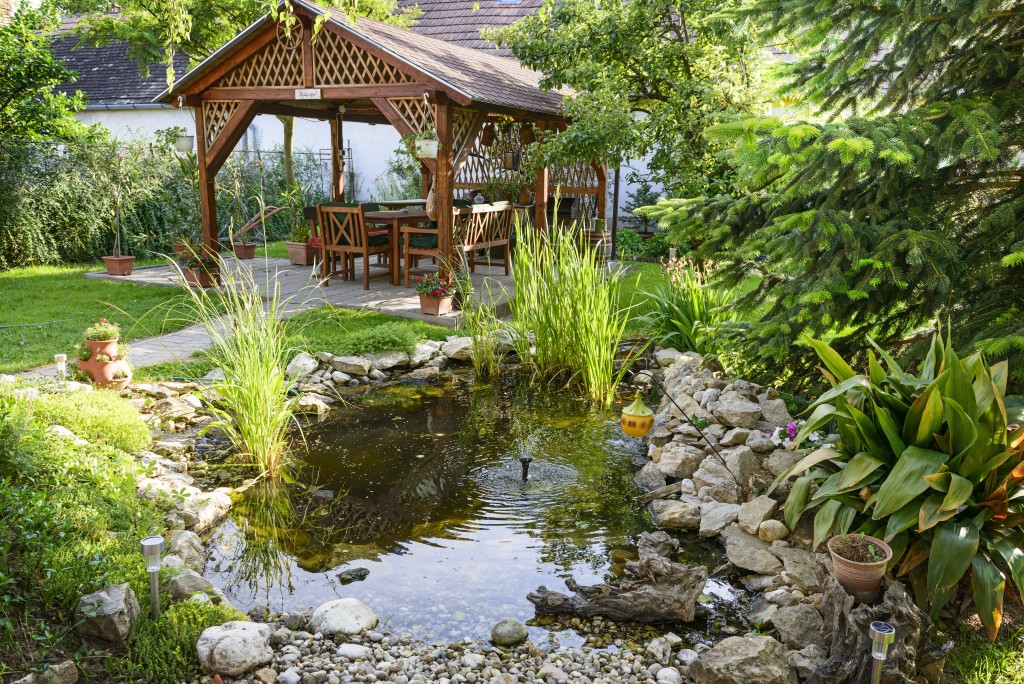Urbanization can mean a lot of things. It can mean jobs for the masses, infrastructures for the public, and basically, advancement of civilizations.
But for American psychologist Edward O. Wilson, it also illustrated the growing detachment of people to the natural world. The psychologist first observed in the 1980’s how the developed countries’ high migration rates in big cities lead to the urban residents’ disconnection to nature. This introduced Biophilic Design which basically focuses on humans’ innate need to connect and dwell in nature, a disposition commonly referred to as biophilia.
Biophilic Design is the use of natural resources to bring building occupants closer to nature through the creative and practical use of plants, lighting, ventilation, and the utilization of various natural elements. Humans inherently affiliate themselves with nature and harnessing this affinity to the natural environment then incorporating it in interior design and architecture is the main basis of the design principle.
The Biophilic Design has an emphasis to create a built environment that can help and improve the occupant’s well-being, through the effective use of plants, air, water, and space. With its positive effects on memory, mood, immunity, and stress, there’s an increasing need to incorporate biophilia in your own home. And with the rate of urbanization expected to rise even more in the coming years, there’s an urgent need for biophilia to infiltrate cities and houses.
Designing a Biophilic Home
There’s a trend to incorporate Biophilia in the office setting due to its benefits, which includes increased productivity, reduced stress levels, and heightened creativity in the workforce. But it’s not just offices that can benefit from the effects of the Biophilic Design. Even homes can use this principle to build a better and greener home.
This design principle can have a calming, healing, and restorative effect to its inhabitants. Studies also show that neighborhoods with easier and closer access to nature have lower crime rates. Unfortunately, not all cities have proper urban planning to incorporate parks and nature in its layout.
While it’s recommended to spend more time outdoors than indoors, most city dwellers don’t have the liberty to be with nature as frequently as they hoped. The best they can do at times is to build a home that brings nature to them.
And when you welcome nature inside your house, you also welcome the possibility of improving your quality of life and boosting your psychological and physiological disposition.
Take note that creating a greener home goes beyond adding a succulent on a windowsill. It extends beyond the use of potted plants to decorate your home. To use Biophilic Design to create a home that’s close to nature, here are simple ways to do it.
1. Apply natural finishes on different home elements
Wooden floor boards, timber staircase steps, stone walls—these are just some ways to use natural finishes in your home. These finishes can also be applied on walls and ceilings by using long-lasting natural materials. While synthetic materials may be cheaper and easier to procure, opt for the natural elements with minimal processing as humans’ are more receptive towards it.
When integrating biophilic design, make sure to consider the supposed function of the space and make the chosen material suitable for the intended functionality of the room.

2. Allow natural light inside your home
Build a home that will let in more natural light and will allow spaces for you to spend time sitting in the sun. Getting some of the that “sunshine vitamin” can lower high blood pressure, improve brain function, and fight against inflammations.
Go for big windows and light-colored curtains to make the living room look livelier. Calculate for the right wall-to-window ratio to effectively achieve energy efficiency at home. Expose spaces to natural light, such as balconies and patios, into comfortable livable spaces where it’s possible to spend numerous hours of the day.
While we recommend allowing light to enter your home, design it in a way to avoid the heat. Exposure to sunlight inside your own home is recommended, but consider your house structure and see to it that you let in the light but not the heat.
3. Let fresh air penetrate your home
No matter how well you design your home, it will always feel stuffy without proper ventilation. To live in a house without proper air circulation means that you’ve been breathing stale air, which can either be too dry or too humid depending on the season.
Naturally, breathing in fresh air is healthier than indoor stale air. Aside from boosting your immune system by supplying your body with oxygen that fights off viruses, germs, and bacteria, it can also improve your heart and brain health, clean your lungs, and expose you to less pollution. Believe it or not, indoor air can sometimes be more polluted than outdoor air in the United States.
Open the windows a couple of times a day and let fresh air revitalize your home.

4. Decorate your home with plants and flowers
Decorate your living room with plotted and hanging plants, instead of synthetic ones. Real plants bring life and warmth to any room and brighten up any space. Place vases with freshly picked flowers on tabletops and countertops, and put large, leafy plants on every room corner possible. Indoor succulents are great decorations for windowsills or on top of shelves. How about converting the living room into a green wall, with real, live plants crawling one side of the room?
5. Opt for nature-inspired shapes and patterns for decorations
A house’s structure is often built with straight lines and going for a structure with waves and curves, often associated with the patterns formed by nature, can be more expensive. Instead of rebuilding your home, mimicking these nature patterns through aesthetic design is more affordable and practical. Aside from using natural resources to decorate your rooms and walls, use decorations such as vases figurines, and mirrors, with waves and forms that resemble nature to accentuate your home.
Creating a Biophilic home may mean more work since you’ll need to maintain the quality of your wooden walls, floors, and staircase. It means more time spent tending to the flowers and plants lining up your living room or surrounding your veranda. But the pros of building a home that heals and revitalizes far outweigh the responsibility of keeping up with it.




